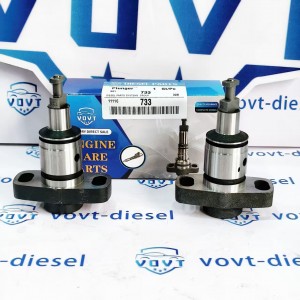New Pressure Regulator Suction Pressure Valve Control Valve A2C9318740080 for Auto Spare Parts
Products Description
| Reference Codes | A2C9318740080 |
| Application | / |
| MOQ | 12PCS |
| Certification | ISO9001 |
| Place of Origin | China |
| Packaging | Neutral packing |
| Quality Control | 100% tested before shipment |
| Lead time | 7~10 working days |
| Payment | T/T, L/C, Paypal, Western Union, MoneyGram or as your requirement |
Magnetic Circuit Design and Energy Efficiency Improvement of Common-Rail Pressure Valve
Abstract
In modern common-rail diesel injection systems, the electromagnetic pressure valve serves as a key actuator responsible for precise control of rail pressure and fuel metering. The valve’s magnetic circuit design directly determines its actuation efficiency, response speed, and steady-state energy consumption. However, traditional valve magnetic circuits often suffer from excessive magnetic flux leakage, eddy current loss, and uneven magnetic field distribution, which degrade energy efficiency and control stability. This study presents a comprehensive investigation into the magnetic circuit optimization and energy efficiency enhancement of a common-rail pressure valve through finite element analysis (FEA) and experimental validation.
A detailed 3D electromagnetic field model of the valve assembly was established using ANSYS Maxwell to simulate the magnetic flux distribution, induction intensity, and eddy current density under different excitation conditions. The influence of key magnetic circuit parameters—including core geometry, air-gap configuration, yoke material properties, and coil turns—was systematically analyzed. To evaluate the dynamic characteristics, a coupled electromagnetic–mechanical simulation was performed in AMESim, correlating coil current, armature displacement, and valve opening time with magnetic field strength and energy loss.
Simulation results indicate that the magnetic efficiency of conventional valve designs is typically below 78%, with significant energy losses caused by non-uniform magnetic flux paths and residual eddy currents in the yoke. Optimization of the magnetic path geometry by introducing a tapered pole face and a dual-air-gap layout improved magnetic field uniformity by 16.4%, while reducing peak eddy current density by 27%. Furthermore, the substitution of traditional low-carbon steel with soft magnetic composite (SMC) materials effectively suppressed eddy current formation and reduced coil heating.
A novel energy-efficient magnetic circuit structure was then proposed, incorporating a flux-guided return path and segmented lamination core. Bench experiments confirmed that the optimized design decreased steady-state coil current by 18.2% and reduced total electromagnetic power loss by 21.5%, without compromising response speed or control precision. The improved flux concentration also enhanced the valve’s dynamic repeatability, ensuring consistent rail pressure regulation under high-frequency operation (>2 kHz).
In addition, a magnetic energy utilization coefficient (MEUC) was introduced to quantitatively assess the ratio of effective magnetic energy to total input energy. This metric proved valuable for evaluating and comparing different magnetic circuit configurations. The optimized design achieved a MEUC improvement from 0.74 to 0.89, signifying a substantial enhancement in overall magnetic efficiency.
Finally, the study discusses the trade-off between energy efficiency and response speed, highlighting that moderate increases in air-gap length can minimize energy losses but may delay valve response if not compensated by optimized coil excitation. A control-oriented optimization model integrating electrical, magnetic, and mechanical subsystems is proposed to achieve adaptive performance balancing in real-time valve operation.
The findings provide a solid theoretical and experimental basis for developing low-power, high-efficiency electromagnetic valves in next-generation common-rail systems and other precision fluid control applications. This work contributes to improving fuel economy, reducing thermal stress, and enhancing system durability under prolonged high-pressure operation.





























